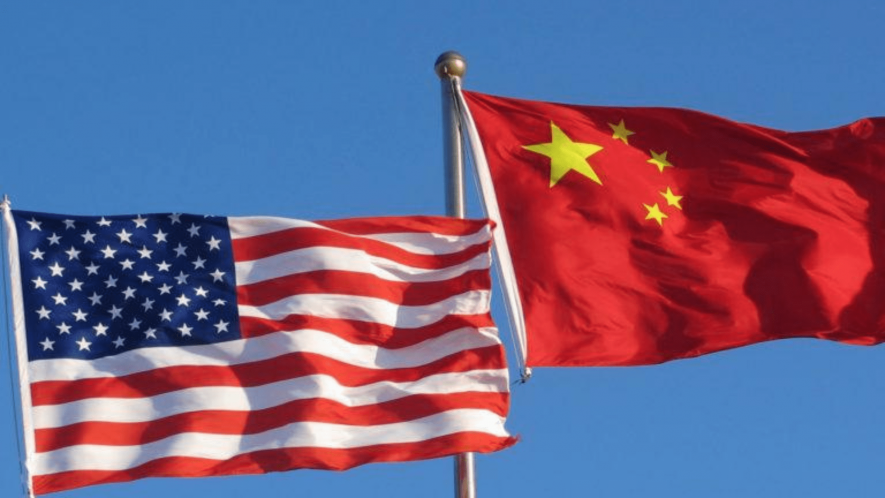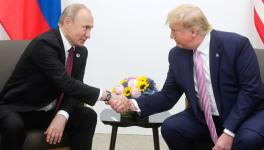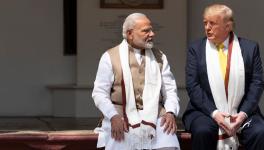Can the US Contain China?

File Image
The US government and its "allies" have been insisting that Chinese firms have overcapacity. Further, they argue that this overcapacity is because consumption is low in China. Therefore, they insist Chinese firms are forced to export, through ostensible exchange rate manipulation and provision of subsidies, resulting in threats to employment and jobs in other countries. Though this narrative has been repeated ad nauseam by the mainstream media and academia, its core claims are open to question, both on theoretical and empirical grounds.
To begin with, there is no rigorous definition of overcapacity in these claims. In terms of macroeconomic theory, firms could maintain excess capacity to deal with unforeseen changes in future demand and supply. But excess capacity in this sense is different from the ostensible Chinese overcapacity that the mainstream media and academia talk about.
What mainstream media and academia mean by Chinese overcapacity is that this production capacity in some cases exceeds domestic demand. But such is the case for firms of many other countries for a range of commodities. But there is never any talk of overcapacity in any other country.
The difference in the two situations is that Chinese firms are superior in quality and price with respect to firms in the developed countries for a whole range of commodities, including those involving high technology. Previously, one or another developing, emerging or newly industrialised country was able to match or surpass some developed countries in the production of a few commodities.
Read Also: Trump’s Use of Tariff Wall as a Weapon
In the case of China, previously multinational corporations of the developed countries used to get a significant part of their manufacturing organised in China while remaining the final sellers of commodities. Thereby, these multinational corporations of developed countries were able to appropriate a significant share of profits for themselves.
But as Chinese firms ascended the technological ladder, the profits that were previously appropriated by the multinational corporations of the developed countries have declined. In other words, multinational corporations of the developed countries are being increasingly outcompeted both in the world market and in the markets of the developed countries.
Previously, when firms in other developed countries sought to match and surpass firms in the US, the government there was able to use the Plaza Accord process and ensure the adoption of voluntary export restraint in these other developed countries. Thereby, the income gap between the US and these other developed countries widened. This was possible because these other developed countries were unable to exercise strategic autonomy with respect to the US.
Moreover, the conceptual framework underlying voluntary export restraint involved the claim that it was in the interests of these other developed countries to follow this type of restraint. Thereby, the ruling elites in these developed countries did not face domestic political setbacks when they complied with these demands of the US government.
The claim by the US government that China is ostensibly manipulating its exchange rate is the current version of the conceptual framework that underlies the Plaza Accords. Likewise, the claim that consumption is ostensibly being suppressed in China in order to push out exports, is the current version of the conceptual framework underlying voluntary export restraint. These claims have little to do with the factual position. Consumption in China tends to rise in tandem with income.
The US government wants China to reduce investment and shift to consumption subsidies for three reasons. First, this will increase Chinese imports of consumer goods from developed countries. Two, this will also slow down China's ascent of the technological ladder. Three, if investment falls and this reduces output then this decline in output will, in fact, reduce consumption!
Besides, the governments of developed countries claim that the alleged provision of subsidies to firms in China and the alleged manipulation of exchange rate justifies imposition of tariffs on Chinese exports. These claims about Chinese provision of subsidies and exchange rate manipulation are out of line, since prices in the highly competitive domestic market of China are lower than international prices. In fact, firms in the developed countries are unable to compete with Chinese firms both in terms of price and quality and, therefore, tariffs and export controls are being imposed in a vain quest to narrow this gap in competitiveness.
Moreover, the days of the Plaza Accords and voluntary export restraint are over. Thus, China not only exercises strategic autonomy but a large number of countries have constituted themselves into processes, such as the BRICS, SCO, BRI etc. that are working for a multipolar world. Therefore, there is little likelihood that these claims about Chinese overcapacity, manipulation of exchange rate, provision of subsidies etc. will find any purchase in the international community.
It is therefore, not surprising that governments of developing countries are increasingly moving toward the position that their firms need to be integrated into global production networks alongside Chinese firms. This could be a useful lesson for governments of developed countries.
The writer is professor, department of economics, Satyawati College, University of Delhi. The views are personal.
Get the latest reports & analysis with people's perspective on Protests, movements & deep analytical videos, discussions of the current affairs in your Telegram app. Subscribe to NewsClick's Telegram channel & get Real-Time updates on stories, as they get published on our website.























